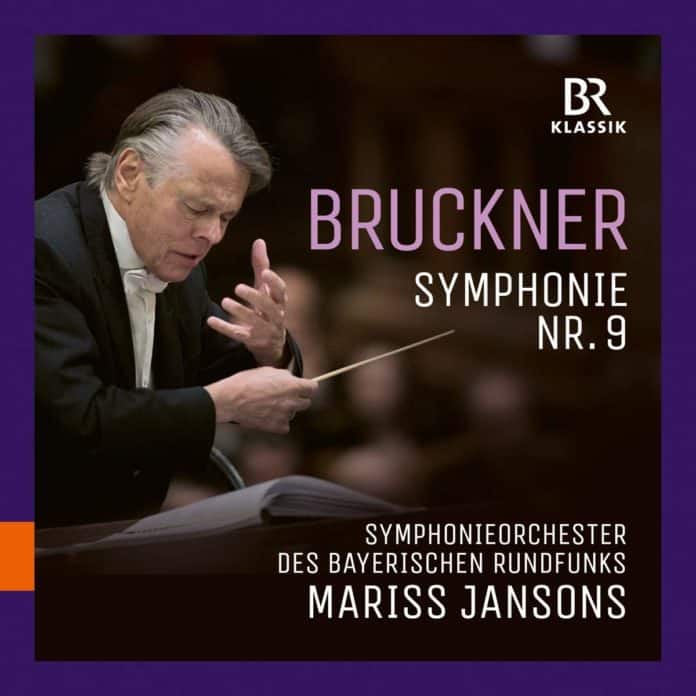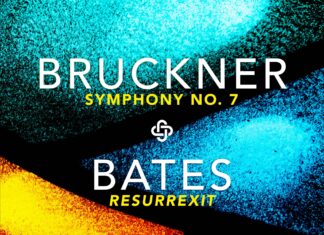Review: Bruckner Symphony 9, Jansons / Symphonieorchester Des Bayersichen Rundfunks (Bavarian Radio Symphony Orchestra) / Mariss Jansons (conductor) / BR-Klassik
There are quite a few excellent Bruckner 9 recordings. One could argue that the 9th is not the most difficult of the composer’s symphonies to bring off. Perhaps this has to do with its unfinished nature which makes the work more open to interpretation compared to the rest of Bruckner’s output. Take Giulini for example. His reading with the Vienna Philharmonic for Deutsche Grammophon is the equivalent of a monolith: concrete, imposing and bold. His is a vision of the 9th as indeed the symphony dedicated to the Almighty, his approach grand and majestic. But this can hardly be the only accepted interpretation, in reality Giulini approaches the 9th as a complete work where the third movement is a culmination of the symphony as a whole (and perhaps a culmination of Bruckner’s oeuvre). Of course, we know this is not the case. Recordings of the completed 4th movement keep popping up and the composer intended for the symphony to have a finale: most of the unfinished movement exists in Bruckner’s own hand.
So what does Jansons’s new recording have to do with all this? Well, to begin with, the new release features only the 3-movement work but, unlike Giulini and many other conductors, Jansons doesn’t treat the symphony as an end in itself. This is a perceptive account and, being recorded live, it is just short of perfect.
The level of orchestral detail the conductor draws from the Bavarian Radio Symphony Orchestra is extraordinary. As in the previous Bruckner recordings with the same forces, one cannot fail but admire the dark-hued timbres of the orchestra building an imposing, granite-like wall of sound with consistently deep and smooth brass playing. And above all the strings: rich and velvety, flexible under the conductor’s baton. Just a word of warning as far as the timpani are concerned: as I‘ve already stated in my review of the 8th (incidentally, my disc of the year), Jansons favours a soft sound from the timpani. Not that they don’t play fortississimo when needed, but they certainly don’t cut through as in other performances. Still, this is no weakness, for there are many listeners who argue this kind of treatment is ideal for the Bruckner symphonies, the combination of softer timpani with brass offering an organ-like sonority. Of course, others will disagree and will prefer a more heaven-storming approach.
To be more precise, I can say that when it comes to Jansons’s choices, nothing is random. Take the first movement for example. When the very first climax appears it is understated, even though all the tension and mystery is retained. But fear not: at the recapitulation, Jansons brings together all the forces needed and offers a uniquely detailed and powerful rendition, which is one of the highlights of this release. Then listen to the equally detailed playing in the second movement, the mysterious-sounding woodwind, the rhythmic precision of those menacing pizzicatos about to introduce the fierce timpani. It is interesting to note that while Jansons’s performance is overall on the fast side, the Scherzo -of all the movements- is taken at a more leisurely tempo.
As for the finale, this will raise some eyebrows: it clocks in at 22 minutes, compared to accounts that are approaching the 30 minutes duration. But this doesn’t mean this is not what the composer intended. Let us not forget that conductors like Knappertsbusch were equally fast, if not faster, and their readings have stood the test of time. Lets us also not forget that this was intended to be the penultimate movement. I am not trying to excuse Jansons’s choice of fast tempi, but I’m just drawing attention to the fact that when one looks at his structural approach as a whole, this finale seems perfect in context. Again, I don’t need to emphasize the superlative playing of the Bavarian RSO, nor the perfect build-up to the climax which, in this faster tempo, sounds apocalyptic. Indeed, the insights Jansons offers while leading to the devastating conclusion are exceptional to the point that one easily becomes a convert to this swifter way of approaching the work. In the last couple of minutes the resolution is yearning heavenwards, the violin arpeggios at the end ethereal like wings ascending to the skies.
As is usually the case with the BR-Klassik/Jansons collaboration, the sound is excellent. The orchestra’s granitic textures are perfectly tailored for Bruckner’s music. This is a different undertaking of one of the most profound symphonies, a modern performance that at last breaks with the lethargic tradition of performing Bruckner’s music with set tempi. In the 9th Bruckner doesn’t follow the traditional sonata form. Each time familiar themes are encountered or an expected climax is reached, nothing sounds exactly the same: Bruckner shifts his focus and the viewpoint changes slightly. Jansons is aware of this and makes his own adjustments when repeating the thematic material. Furtwangler, Jochum and Knappertsbusch knew how to mould these phrases and how to adjust tempo relations, making their performances unique. Jansons follows suit.
Rating: ***** (5/5)
What is your favourite recording of Bruckner’s mighty 9th? We have a thread about it in our Forums or you can just leave a comment below.







[…] climaxes and seems to know how crucial it is for this work to adhere to steady tempos. (the recently reviewed Jansons BRSO recording is equally impressive, albeit an antithetical approach altogether, focusing […]
[…] one of the completed finales. Why Bruckner? Because I find his recording of the Bruckner 8th and that of the 9th, both with the Bavarian Radio Symphony Orchestra (again on the BR Klassik label), to be […]
[…] For the orchestral fluidity, the blending of sounds the conductor achieves with the BRSO, reminiscence of the Karajan/BPO era. But mainly for Jansons’s highly individual, visionary approach. The last movement alone is illuminating in its cathartically up-tempo conclusion. Read full review. […]